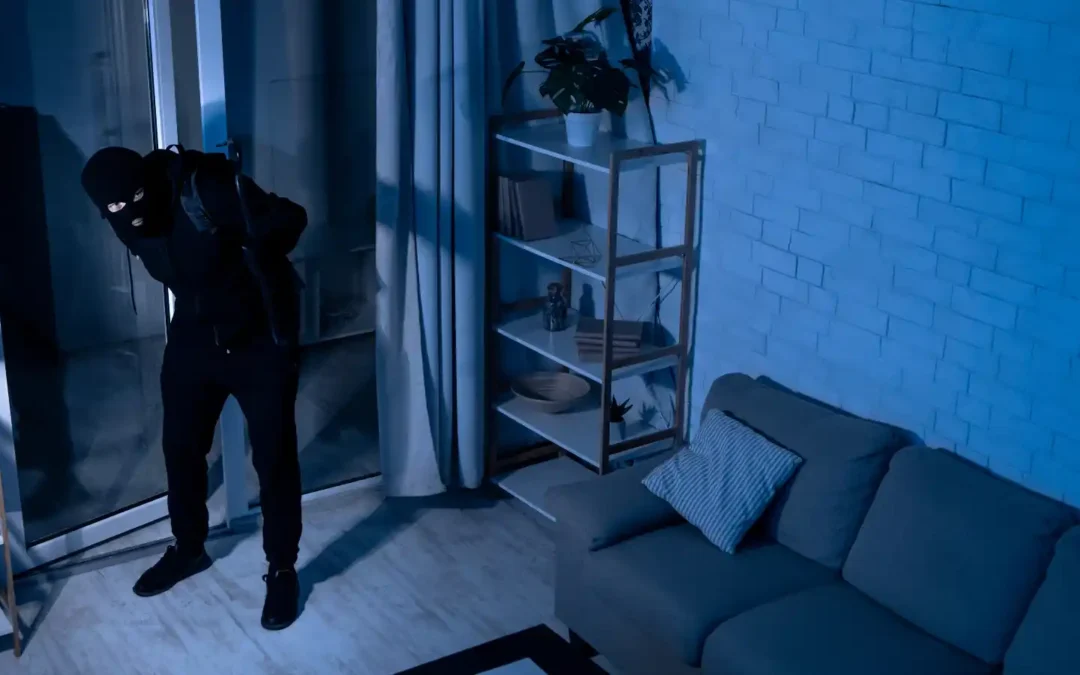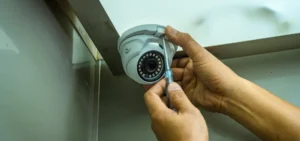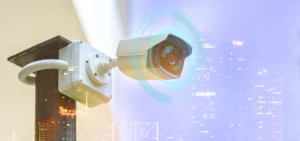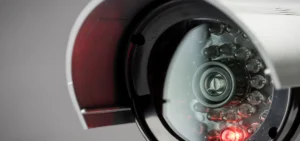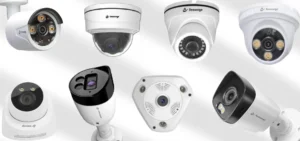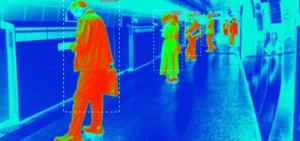Can CCTV cameras effectively operate in the dark? This is a question commonly asked by homeowners, business owners, and security professionals alike. With the advancement in technology, many surveillance systems claim to have the ability to capture clear footage even in low-light conditions. In this article, we will explore the capabilities of CCTV cameras when it comes to operating in the dark.
Advancements in infrared technology have greatly improved the night vision capabilities of CCTV cameras. By using infrared LEDs, these cameras can illuminate the surrounding area with invisible infrared light, allowing them to capture clear footage in complete darkness. However, it is important to note that the range and quality of night vision may vary between different camera models.
Additionally, some CCTV cameras come equipped with features such as wide dynamic range (WDR) and starlight technology. These features enhance the camera’s ability to capture detail in challenging lighting conditions, making them even more effective in low-light environments.
Whether you’re looking to protect your property or monitor a dimly lit area, understanding the capabilities of CCTV cameras in the dark is essential. Join us as we dive deeper into the topic and uncover the truth behind these surveillance systems after sunset.
Common misconceptions about CCTV cameras in low-light conditions
There are several misconceptions when it comes to CCTV cameras and their ability to function in low-light conditions. One common misconception is that all CCTV cameras are capable of capturing clear footage in complete darkness. While it is true that many modern CCTV cameras have night vision capabilities, the quality and range of these capabilities can vary greatly between different models.
Another misconception is that the presence of ambient light is sufficient for CCTV cameras to operate effectively in the dark. While ambient light can certainly help improve the visibility of objects, it may not be enough to capture clear and detailed footage. This is where the night vision technology in CCTV cameras comes into play.
Tips for optimizing CCTV camera performance in the dark
To ensure optimal performance of CCTV cameras in low-light conditions, several tips and techniques can be implemented. One important aspect to consider is the placement of the cameras. Positioning the cameras strategically can help maximize the coverage area and minimize the impact of shadows and obstructions.
Another tip is to adjust the camera settings for low-light conditions. Most CCTV cameras come with adjustable settings such as shutter speed, aperture, and gain control. By tweaking these settings, the camera can capture clearer footage in the dark. However, it is important to strike a balance, as increasing the sensitivity too much can result in noisy or grainy footage.
Factors to consider for CCTV cameras in dark environments
When it comes to CCTV cameras in dark environments, several factors need to be taken into consideration. One crucial factor is the range of the camera’s night vision capabilities. The range refers to the maximum distance at which the camera can effectively capture clear footage in complete darkness. It is important to choose a camera with a range that matches the specific requirements of the location.
Another factor is the quality of the camera’s night vision. The quality is determined by factors such as the number of infrared LEDs, the resolution of the camera, and the lens used. Cameras with higher resolution and more infrared LEDs tend to produce clearer and more detailed footage in the dark.
Understanding night vision technology in CCTV cameras
Night vision technology plays a crucial role in the ability of CCTV cameras to operate in the dark. Most modern CCTV cameras use infrared (IR) technology to achieve night vision capabilities. These cameras are equipped with infrared LEDs that emit invisible infrared light, illuminating the area and allowing the camera to capture clear footage even in complete darkness.
There are two types of night vision technology commonly used in CCTV cameras: active infrared (AIR) and passive infrared (PIR). Active infrared cameras emit infrared light, while passive infrared cameras rely on the existing infrared radiation emitted by objects in the environment. Both types have their advantages and limitations, and the choice between them depends on the specific requirements of the surveillance application.
Importance of CCTV cameras in low-light conditions
The importance of CCTV cameras in low-light conditions cannot be overstated. Many criminal activities tend to occur under the cover of darkness, making it crucial to have surveillance systems that can effectively capture clear footage in such conditions. CCTV cameras not only act as a deterrent to potential criminals but also provide valuable evidence in the event of a crime.
In addition to security purposes, CCTV cameras in low-light conditions also have practical applications. For example, in outdoor areas with minimal lighting, such as parking lots or construction sites, CCTV cameras can help monitor activities and ensure the safety of individuals.
Types of CCTV cameras
There are various types of CCTV cameras available in the market, each with its specific features and capabilities. One common type is the dome camera, which is widely used for indoor surveillance. Dome cameras are discreet and can be easily mounted on ceilings, making them suitable for monitoring areas such as offices, retail stores, and hotels.
Another type is the bullet camera, which is commonly used for outdoor surveillance. Bullet cameras are designed to withstand harsh weather conditions and are often equipped with features such as infrared LEDs and varifocal lenses. They are ideal for monitoring large outdoor areas such as parking lots, building entrances, and warehouses.
How do CCTV cameras work?
To understand how CCTV cameras work in low-light conditions, it is important to have a basic understanding of their functioning. CCTV cameras consist of several components, including a lens, an image sensor, and a processor. The lens captures the light and focuses it onto the image sensor, which converts the light into an electrical signal. The processor then processes the signal and converts it into a digital image or video.
In low-light conditions, CCTV cameras rely on night vision technology to enhance their visibility. As mentioned earlier, most CCTV cameras use infrared LEDs to emit invisible infrared light, illuminating the area and allowing the camera to capture clear footage. The camera’s image sensor is designed to detect this infrared light, enabling it to produce visible images or videos even in complete darkness.
Alternative solutions for dark environments
While CCTV cameras with night vision capabilities are effective in low-light conditions, there are alternative solutions that can be considered for extremely dark environments. One such solution is the use of thermal imaging cameras. These cameras detect the heat emitted by objects and convert them into visible images, allowing them to capture clear footage even in pitch-black conditions.
Another alternative is the use of supplementary lighting. In situations where CCTV cameras alone cannot provide sufficient illumination, additional lighting can be installed to improve visibility. This can include floodlights, spotlights, or even motion-activated lights. By combining CCTV cameras with supplementary lighting, the visibility and quality of the footage can be greatly enhanced.
Conclusion
In conclusion, CCTV cameras can indeed work in the dark, thanks to advancements in night vision technology. With the use of infrared LEDs and other features such as wide dynamic range and starlight technology, these cameras can capture clear footage in low-light conditions. However, it is important to consider factors such as camera placement, camera settings, and the range and quality of night vision when choosing a CCTV camera for dark environments.
Whether you’re looking to protect your property or monitor a dimly lit area, understanding the capabilities of CCTV cameras in the dark is essential. By following the tips for optimizing CCTV camera performance in the dark and considering alternative solutions when necessary, you can ensure that your surveillance system operates effectively even in the darkest of conditions.
Secureye Best Night Vision Cameras:
- 4MP NETWORK CAMERA WITH COLOR NIGHT
- COLOR NIGHT VISION BULLET CAMERA: S-A-W5-c
- COLOR NIGHT VISION DOME CAMERA: S-A-D5-C
- PRIVATE: COLOR NETWORK CAMERA:S-IP-w4
- PRIVATE: 4MP NETWORK DOME CAMERA: S-IP-D4
- 5MP NETWORK DOME CAMERA: SIP-5MP-D-C-A
- 3MP NETWORK DOME CAMERA: SIP-3HD-D-C-A
- COLOR NETWORK CAMERA: SIP-5MP-20MC-A
- 3MP COLOR CAMERA: SIP-3HD-20MC-A
- 3MP NETWORK DOME CAMERA: SIP-3HD-D-C
- 3MP NETWORK BULLET CAMERA: SIP-3HD-20M-C
- SC-SIP-2HD-D-C
- SC-SIP-2HD-20M-C
- AHD BULLET CAMERA – S-A-W2
- AHD DOME CAMERA WITH FLOOD LIGHT LED – S-A-D2

